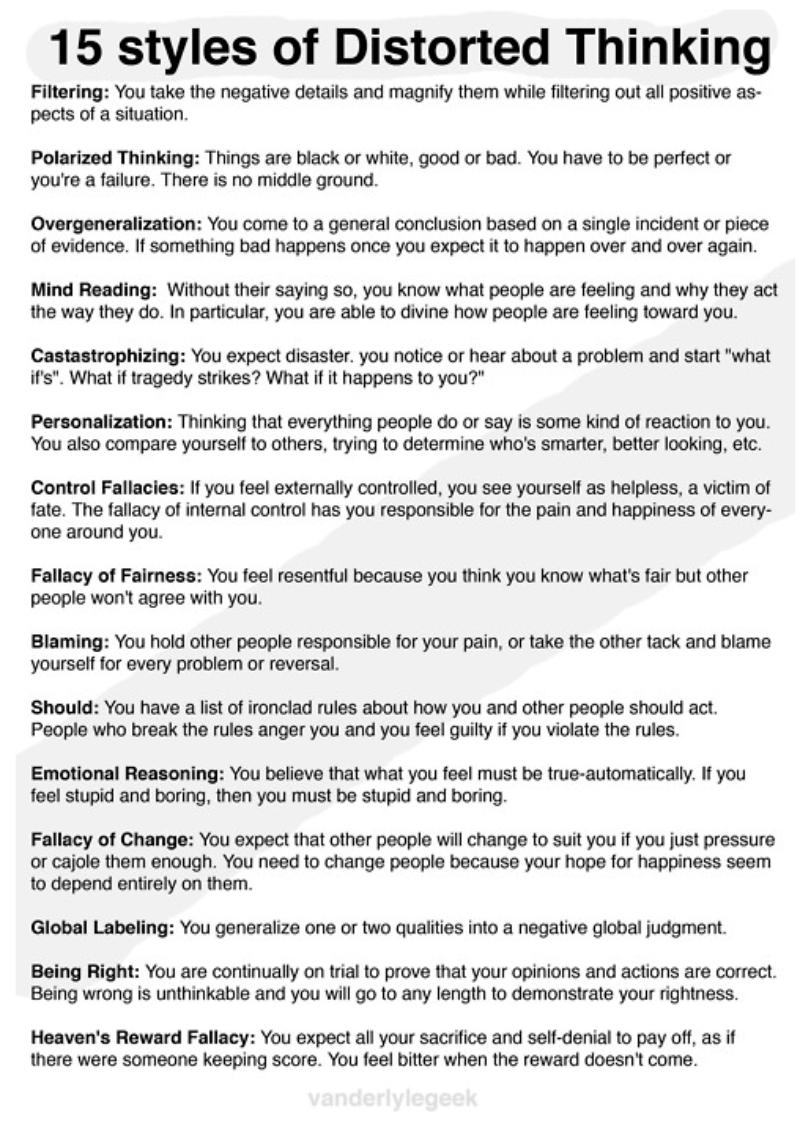The Educational “Worry Roster”

Like many people, I am a worry wart. I have a long list of worries about the future, my health, my parents, finances, and climate change. However, as an educator, I have numerous worries related to students, families, communities, and if I am doing enough to support education to build our future. Those in education are no stranger to overthinking, thought rumination, and sleepless nights being deeply committed to serving others, supporting success, and ensuring needs are met. Worry can be considered natural, but rumination is extreme and an emotionally repetitive pattern associated negatively with stress (Zysberg & Zisberg, 2022).
This article explores worry as it pertains to being an educator. It explains how worry is similar and/or different from anxiety and stress, how to see being a worrier as a positive trait, and possible gender differences regarding worry. This work is an attempt to contribute to important discussions on educator burnout, and how to emotionally manage during difficult times. The article provides strategies for managing a worry roster and how to support others struggling with their own. Why do we need to address worrying in education? Because the recurring thoughts that come with continual worrying may lead to difficulty concentrating, decreased positivity, and emotional sensitivity to stress (Lyubomirsky et al., 2003).
One of the biggest lessons educators need to learn and learn quickly is that their “inbox” or “to do” lists are never complete. They need to be able to walk away each day knowing that they could work 24 hours a day, 7 days a week, and still have grading to complete, planning to revise, family communications to do, and their physical space to organize, along with a multitude of other tasks. Some describe it as a continuous cycle of social, mental, and physical planning and preparation then delivery and reflection. Education is truly a never-ending helix of looking ahead to be out in front of it all or looking back to reflect and modify.
What they do not teach in teacher preparation programs is this work may come at the cost of your own personal emotional and mental toll that does not shut off when you walk out the door or turn your computer off. While some educators can “shut it down” and turn to their personal lives to be with family, participate in self-care activities and hobbies, and be present during social outings, many cannot adjust their brains to stop thinking, processing, and problem-solving. These actions lead to eventual exhaustion and burnout and for an educator, it can lead to the development of a long and complicated worry roster.

What is a Worry Roster?
An educational worry roster is an invisible list in your head that keeps you up at night, you think about it while driving, see it reflected in your own family, and creeps up when you least expect it. Sweeny and Dooley (2017) describe worry as an “emotional experience that arises alongside repetitive unpleasant thoughts about the future” (p. 1). Educational worry rosters may contain concerns about students who need more support, families in crisis, lack of resources, struggling colleagues, unrealistic expectations and timelines, crumbling infrastructure, and difficult decisions ahead. Sometimes it is very long with multiple names and situations, and sometimes it contains one big situation that seems impossible to resolve. It is there in the summer when you are supposed to be on vacation, on weekends when you are trying to catch your breath from the week before, and it is there as you relax with friends and family. Always there, popping into your brain like a memory triggered by a sense, a face, a name, a moment. Then, either your brain reacts by trying to push it away to a more appropriate time, or your head becomes obsessed with trying to brainstorm ways to remove items one by one.
Most items on a worry roster are there for the long haul. They are there long after you have passed the student and their family to the next class or school. Long after you have processed the situation and believe you have done all that you can. Long after you have even interacted with the source of the worry. The list is constantly changing, updating, and morphing depending on your role and experiences but it is there waiting for you and ready to pop up when you least expect it.
What does research tell us?
To begin, worry is a “cognitive component of anxiety”, and “is elicited in response to an anticipated threat” (Borkovec, 1984, p. 481), or “focusing on excessive or unrealistic concern about future events” (Zebb & Beck, 1998, p. 46). However, that does not break down the characteristics of worry to be understood to tame the list and function more healthily. Importantly, a connection between anxiety and worry is that anxiety may be caused by thoughts and images of worry. Yes, excess levels of worry are associated with poor mood, physical health, and mental illness (Sweeny & Dooley, 2017). Excess worry sometimes referred to as “rumination” actually reduces the ability to problem solve (Ward et al., 2003), which is the exact opposite of why worrying can be a positive action.
Is it Worry, Stress, or Anxiety?
Pattee (2020) shares that worry is what happens when your mind dwells on negative thoughts, uncertain outcomes or things that could go wrong. It happens only in your mind (as thoughts), but not in your body. When thinking about a potential uncertain or unpleasant situation – such as parent/teacher conferences, or a performance review – our brains become stimulated. Worry may cause problem-solving or action taken, both of which are positive things. It’s only when stuck thinking about a problem that worry stops being functional.

Stress, on the other hand, needs a stressor. Usually, some kind of external circumstance, like report card deadlines or a medical test. Stress prompts a behavioral response. Your limbic system kicks in and releases adrenaline and cortisol, which activates your brain and body to handle the threat. Symptoms of stress include a rapid heart rate, clammy palms and shallow breath.
If stress and worry are the symptoms, anxiety is the culmination. Anxiety has a cognitive element (worry) and a physiological response (stress), which means that we experience anxiety in both our mind and our body. Essentially, “worry happens in your mind, stress happens in your body, and anxiety happens in your mind and body” (Pattee, 2020).
Are There Gender Differences?
Worry is a universal experience. In a study regarding gender and the tendency to worry, McCann et al. (1991) stated women report significantly higher levels of worry than men do. Importantly, the authors felt gender differences in worry might occur because “it is less socially acceptable for men than it is for women to admit to relatively high degrees of worry” (p. 296). At the time of this research (1991), the world was different, “Women are economically, socially, and politically disadvantaged, and it is the conflicts and the sense of powerlessness derived from these inequities that cause higher levels of worry among women” (p. 300).
In a more recent study of university students, Barahmand (2010) found men reported greater positive beliefs about worry while women reported greater negative problems and a careless/impulsive style. Furthermore, worry seems to be exerting its impact on both genders in the form of difficulties in concentrating, fatigue and sleep problems. Gender should not play a role in educational worry. Good educators care and care deeply. Worry accompanies that care no matter how you identify.
“Just don’t worry about it!”
There is nothing more triggering than someone saying, “Don’t worry about it”. It sends people into a mental fury that can make everything so much worse. It may make someone worry even more because they may begin to question their mental health and capacity to “just get over it”! Multiple studies tell us that worrying can be as uncontrollable as the outcomes about which one worries, and worriers may contribute to their anguish if they attempt to hide or subdue their feelings (Sweeny & Dooley, 2017).
The concept of worrying is complex and is at the forefront of many anxiety disorders, however much work is being done to support the notion of worrying in certain contexts that can be viewed as constructive and an important process in problem-solving and reducing anxiety (Davey, 1994). Educators offer beyond measurable amounts of decisions and solutions every day, there is no surprise that they worry. If we can support their vulnerability to share their worries, there may be potential to find solutions to problems both big and small, personal and professional, and to support schools and their communities today and for years to come.

Can Worrying be Productive?
Research tells us that we worry because we may be good at identifying negative outcome possibilities and pointing out problems to better cope…i.e. we worry in an attempt to problem-solve. (Borkovec, 1984). Importantly, worrying may have positive values. It encourages consideration of alternative solutions, increases motivation, and concentration (Zeeb & Beck, 1998). Davey et al. (1996) suggest that worrying can be motivating and may deepen analytic thinking and planning which is an important characteristic of educators.
Furthermore, Sweeny and Dooley (2017) discovered an extensive list of the positive benefits of worry. Specifically, the authors state that worry can be a motivator and an emotional buffer.
- Illuminates the importance of taking action to prevent an undesirable outcome
- Keeps situations at the forefront of one’s mind to ensure action is taken
- Triggers efforts to mitigate the consequences of bad news
- Motivates productive behavior
- Enhances the effectiveness of goal-directed action by focusing on obstacles
- Serves as an emotional buffer to provide a desirable contrast to reactions
Multiple studies found techniques and strategies such as relaxation meditation, guided imagery, breathing practices, and self-control guidelines could be of tremendous value in reducing worry-related behaviors and physical symptoms (headaches, insomnia, etc.) (Rapee, 1993; Borkovec, 1985; Borkovec & Newman, 1998). Furthermore, Kelly and Miller (1999) created a list to support those who are “worrisome” however; the list can be applied to those in education for themselves.
- Plan a daily worry period
- Create a working alliance
- Use listening skills
- Write done worries
- Learn to reassure self
- Plan positive experiences
- Identify conditions and feelings
- Concentrate on the here and now
How Manage Your Worries
In 2011, after I was diagnosed with cancer and promoted to school principal the same year, I was noticeably not mentally well. My worry roster had grown to an uncontrollable length and was affecting my personal and professional life. I was easily angered, not sleeping, and not managing my relationships. Proudly, I accessed our school district’s Employee Assistance Program (EAP) and sought out a counselor and further medical support to get my mind where it needed to be. The counselor taught me that my thinking was “distorted” and I seemed to always think of worst case scenarios. We talked regularly to work through situations to help me find the positive outcomes again and I keep a “distorted thinking” chart (also known as “cognitive distortions”) right next to my desk as a reminder to help me manage in times of worry.

Robinson et al. (2021) offers further activities to manage your worries so they do not manifest into a more chronic worrying state.
1. Create a daily “worry” period
-
- Carve out a period of time during the day to worry, write your worries down then go over your list during your designated time. Once your time allotment is complete, continue on with your day knowing you have already addressed your worry roster.
2. Distinguish between solvable and unsolvable worries
-
- If the worry is solvable, make a list of all the possible solutions but do not get hung up on finding the perfect solution. Focus on the things you have the power to change, rather than the circumstances or realities beyond your control. After you have evaluated your options, make a plan, and start doing something about the problem.
- If the worry is not solvable, accept the uncertainty. Worrying is a way to predict the future. Thinking about all the things that could go wrong does not make life any more predictable. Focusing on worst-case scenarios keeps you from enjoying the good things you have in the present. To stop worrying, tackle your need for certainty and immediate answers.
3. Interrupt the worry cycle
-
- Get up and get moving, get to a yoga class, meditate.
- Get up and get moving, get to a yoga class, meditate.
4. Talk about your worries
-
- Talk face to face with a trusted friend or family member—someone who will listen to you without judging, criticizing, or being distracted.
- If your fears are unwarranted, verbalizing them can expose them for what they are. If your fears are justified, sharing them with someone else can produce solutions that you may not have thought of.
- Know who to avoid when you’re feeling anxious. Your anxious take on life may be something you learned when you were growing up. When considering who to turn to, ask yourself whether you tend to feel better or worse after talking to that person about a problem.
5. Practice mindfulness
-
- Acknowledge and observe your worries
- Let your worries go
- Stay focused on the present
- Repeat daily
From worry wart to worry-wise!
I have learned to recognize my inner worry wart to become more “worry-wise (Schatz Alton, 2018). I have moved from continual thinking to action by tweaking repetitive worrisome thoughts to positive actionable words. I have stopped saying, “I am so worried about…” and modified it to “I wonder how I can support (help, find, be, or develop…” and then brainstorm a list of people, places, and solutions that may be helpful. Moving from my brain rumination to writing down thoughts on paper has also alleviated many sleepless nights and allowed for many more days that are productive.
To be in education means you care deeply about those you serve and the future of our world. The motivational benefits of worry can support that future by shaping our role to be preventive and protective, using worry as a cognitive process for problem-solving, recovery, preparation, and promotion of positive behaviors. I am going to continue to worry my heart out.
If you or someone you know is worrying to the point of physical, mental, and emotional distress, please seek medical support.
This article is available and can be accessed in Spanish here.
Barahmand, U. (2010). worry and problem solving skills in University students. Journal of Psychology, 1(2), 105-111.
Borkovec, T. D. (1985). Worry: A potentially valuable concept. Behaviour Research and Therapy, 23(4), 481-482.
Davey, G. C. L. (1994). Pathological worrying as exacerbated problem-solving. In G. C. L. Davey & F. Tallis (Eds.), Worrying: Perspectives on theory, assessment and treatment (pp. 35–59). John Wiley & Sons.
Davey, G. C., Tallis, F., & Capuzzo, N. (1996). Beliefs about the consequences of worrying. Cognitive Therapy and Research, 20(5), 499-520.
Kelly, W.E., & Miller, M.J. (1999). A discussion of worry with suggestions for counselors. Counseling and Values, 44, 55-66.
Lyubomirsky, S., Kasri, F., & Zehm, K. (2003). Dysphoric rumination impairs concentration on academic tasks. Cognitive Therapy and Research, 27(3), 309-330.
McCann, S., Stewin, L., & Short, R. (1991). Sex differences, social desirability, masculinity, and the tendency to worry. Journal of Genetic Psychology, 152(3), 295-301.
Pattee, E. (2020 February, 26). The difference between worry, stress, and anxiety. The New York Times. Retrieved from https://www.nytimes.com/2020/02/26/smarter-living/the-difference-between-worry-stress-and-anxiety.html
Rapee, R. M. (1993). The utilisation of working memory by worry. Behaviour Research and Therapy, 31(6), 617-620.
Robinson, L., Smith, M., & Segal, J. (2021). How to stop worrying. Combat Domestic Violence and Abuse. Retreived from https://www.combatdomesticviolence.com/how-to-stop-worrying/
Schatz Alton, N. (2018, December 28). Worrywart to worry-wise. Parent Map. Retreived from https://www.parentmap.com/article/worrywart-worry-wise
Sweeny, K., & Dooley, M. D. (2017). The surprising upsides of worry. Social and Personality Psychology Compass, 11(4), e12311.
Ward, A., Lyubomirsky, S., Sousa, L., & Nolen-Hoeksema, S. (2003). Can’t quite commit: Rumination and uncertainty. Personality and Social Psychology Bulletin, 29(1), 96-107.
Zebb, B. J., & Beck, J. G. (1998). Worry versus anxiety: Is there really a difference?. Behavior Modification, 22(1), 45-61.
Zysberg, L., & Zisberg, A. (2022). Days of worry: Emotional intelligence and social support mediate worry in the COVID-19 pandemic. Journal of Health Psychology, 27(2), 268–277. https://doi.org/10.1177/1359105320949935









